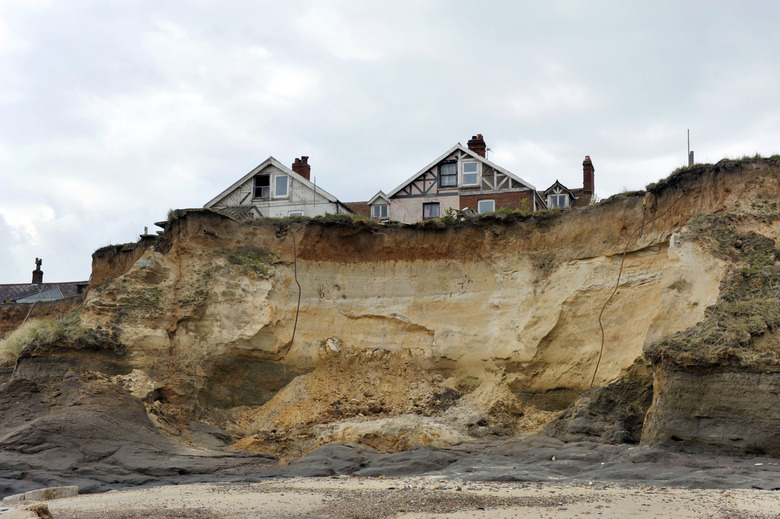Why Is Erosion An Important Natural Process?
A natural process affected by human activities, erosion causes soil or layers of soil to be moved or worn away. Erosion is a potential environmental issue because it usually washes away nutrient-rich topsoil from lands. This can prevent future generations of plants from growing in eroded areas. Because of this, erosion is considered one of the most influential natural forces in nature.
How Erosion Occurs
How Erosion Occurs
Erosion occurs mainly because of water. Increased amounts of water tend to overflow onto land. As the water increases, the soil becomes over-saturated with water. According to a Virginia Tech environmental professor, most of the soil particles end up flowing with the water sources, such as lakes, rivers or the ocean. The end result is high amounts of soil particles in water sources and a lack of soil, or nutrient-rich soil, on land.
Environmental Impact
Environmental Impact
Erosion can result in radical changes to ecosystems. Plant life may be unable to sustain itself or create new generations of plants in the eroded soil. If the soil that washes away contained hazardous, man-made chemicals, the chemicals enter into the water supply. This can result in public health hazards or threats to aquatic life. Future water increases may actually cause even greater damage. This is because the water may be able to move faster over eroded soil and cause flash-flood damage.
Benefits
Benefits
Natural soil erosion can play a beneficial role in the environment too. For example, a paper written by Washington State University professor I.C. Wheeting outlined the benefits of soil erosion between 1940 and 1949. In his studies, Wheeting found natural amounts of soil erosion helped feed water sources with essential nutrients, helping the local aquatic ecosystem. The erosion also helped cleanse the soil of any useless materials, such as rotting tree matter or nutrient-less dirt from the area. The replaced soil can often become nutrient-rich and help plant life thrive.
Changing Landscapes
Changing Landscapes
Ultimately, soil erosion helps change the landscape of any geographic area. Many landscapes across the world are formed from the rapid rushing of water. Many sites, such as the Grand Canyon, are the result of thousands of years of erosion from rushing waters. Rocks that are across the Earth are formed from the immense power of rushing water erosion; the rocks are known as sedimentary rocks. What is now a smooth canyon could have been a lush forest thousands of years ago, all because of soil erosion.
Cite This Article
MLA
Fitzpatrick, Mark. "Why Is Erosion An Important Natural Process?" sciencing.com, https://www.sciencing.com/erosion-important-natural-process-8525136/. 22 November 2019.
APA
Fitzpatrick, Mark. (2019, November 22). Why Is Erosion An Important Natural Process?. sciencing.com. Retrieved from https://www.sciencing.com/erosion-important-natural-process-8525136/
Chicago
Fitzpatrick, Mark. Why Is Erosion An Important Natural Process? last modified March 24, 2022. https://www.sciencing.com/erosion-important-natural-process-8525136/
